Manhattan’s Museum Mile spans Fifth Avenue from 82nd to 110th Street. The six museums that fall within the Upper East Side are works of art in their own right. Three of the six—the Cooper Hewitt, the Guggenheim, and the Metropolitan Museum of Art—are National Historic Landmarks, but in the eyes and hearts of many, all of them qualify as landmarks.
Jewish Museum
1109 Fifth Avenue (at 92nd Street)
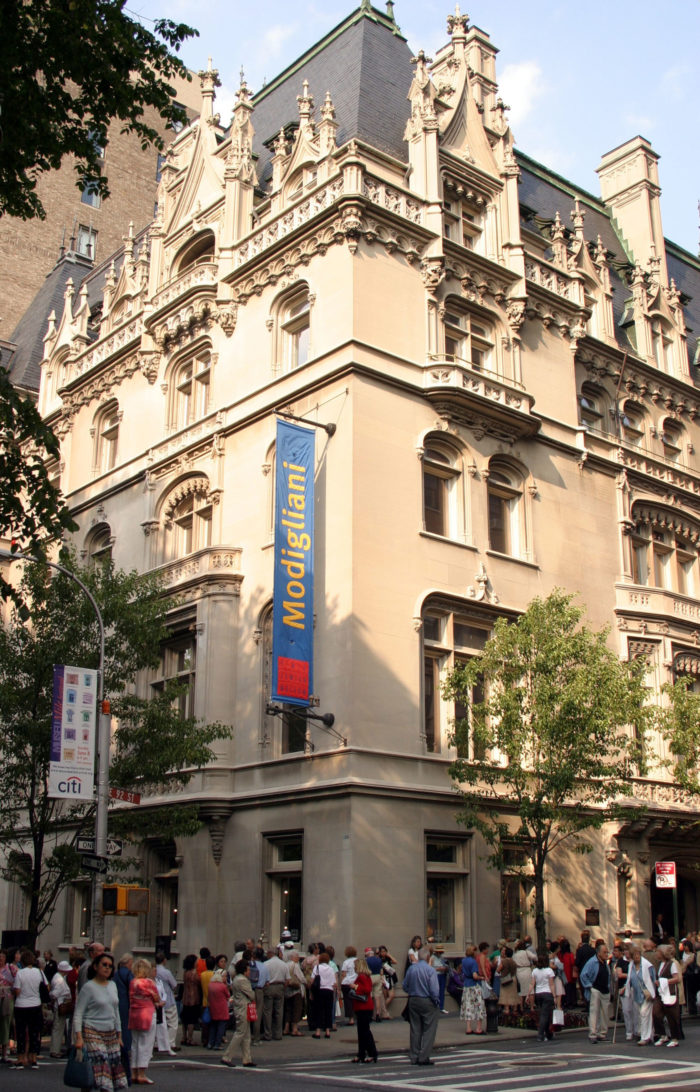
The Jewish Museum. Image: The Jewish Museum New York/Wikimedia
It is only fitting that the Jewish Museum is a spectacular piece of architecture: It was previously the mansion of the Warburg family, and Frieda Warburg, the grandmother of Warburg Realty CEO Frederick Warburg Peters, donated it to the Jewish Theological Seminary of America in 1944 to serve as the country’s first museum dedicated to preserving Jewish art and culture. The museum’s collection encompasses nearly 30,000 artworks and artifacts, from coins dating back to the second century BCE to 18th-century Torah arks to paintings by Marc Chagall. Completed in 1908 for Frieda and her husband, banker and philanthropist Felix M. Warburg, the mansion was designed by C.P.H. Gilbert, a favorite of Gilded Era movers and shakers. If the building resembles a 16th-century French château, that is because it was meant to: Its opulent style is known as Châteauesque or François I. A 1993 renovation and expansion played up the original Gothic touches.
Cooper Hewitt, Smithsonian Design Museum
Two East 91st Street (at Fifth Avenue)
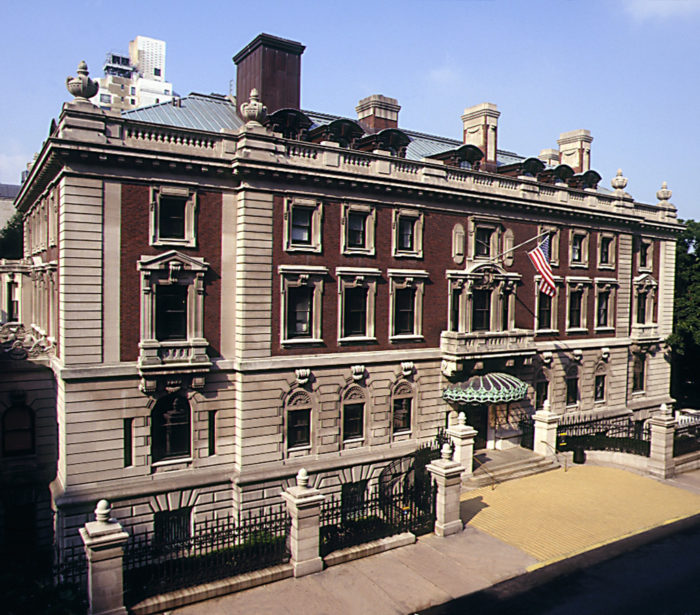
The Cooper Hewitt. Image: Matt Flynn/Wikimedia
The Cooper Hewitt is housed in another former private mansion, this one a home of magnate Andrew Carnegie. Completed in 1902, the 64-room Georgian-style abode was the first home in the city to have an Otis elevator, which now resides in the Smithsonian’s National Museum of American History in Washington. By today’s standards the red-brick-and-limestone structure is marvelously opulent, from the Tiffany glass windows to the carved teak moldings, but when Carnegie commissioned architectural firm Babb, Cook & Wiliard to construct the home, he requested the “most modest, plainest and most roomy house in New York.” The property was—and still is—the site of one of Manhattan’s few private gardens; today it includes cheery trees, rhododendrons, tables and chairs, a rockery, and even a ping-pong table.
National Academy of Design
1083 Fifth Avenue (between 89th and 90th Streets)
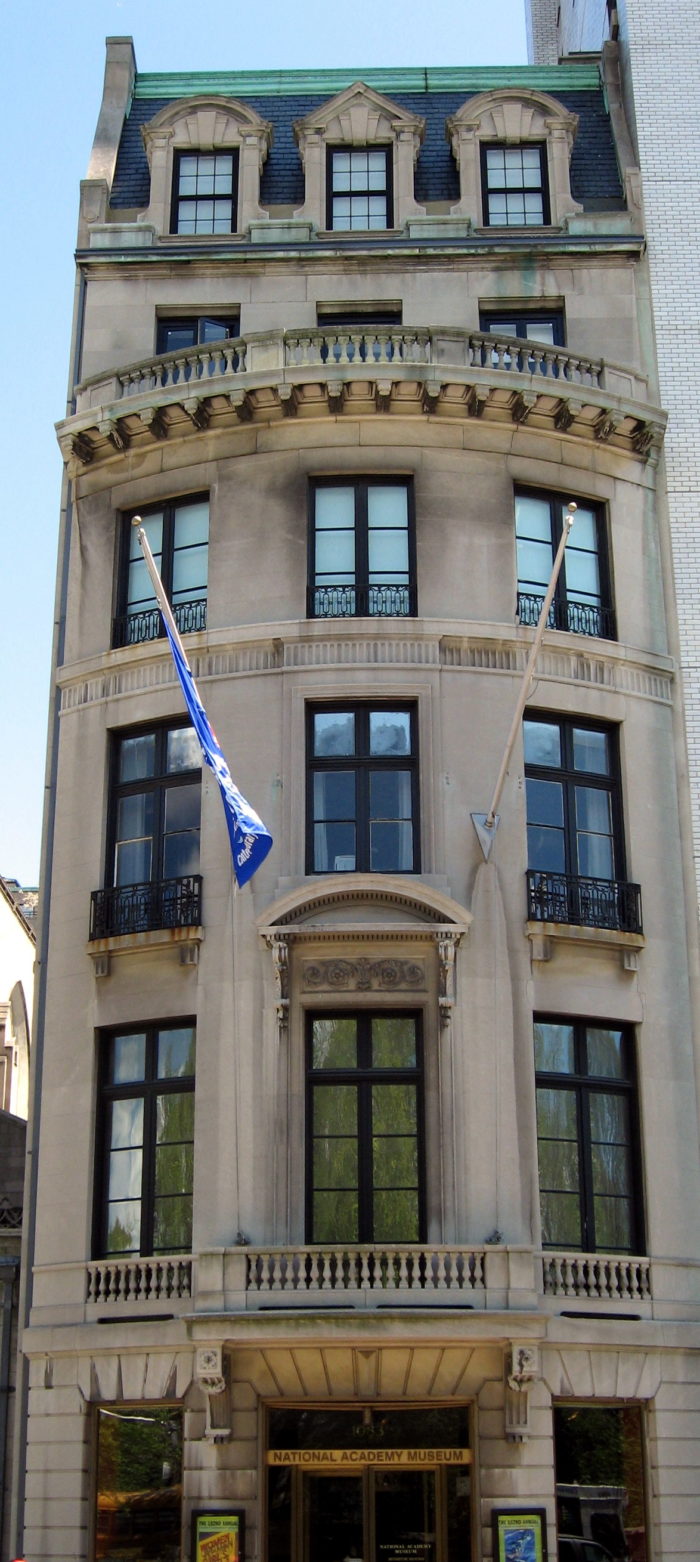
The National Academy. Image: I, Padraic Ryan/Wikimedia
The current home of the National Academy of Design had been the residence of philanthropist Archer Milton Huntington and his wife, sculptor Anna Hyatt Huntington; her 1915 statue of Joan of Arc, which stands outside Riverside Park at 93rd Street, was the city’s first public statue dedicated to a woman. The National Academy is made up of two townhouses, one designed in classic Beaux-Arts style by Odgen Codman Jr., who co-wrote “The Decoration of Houses” with Edith Wharton, and the second redesigned by him in 1913 to better complement the first. These are connected by a rotunda with a spectacular curved staircase boasting an elaborate cast-iron railing. The museum displays works by 19th– and 20th-century artists and architects as diverse as William Merrit Chase and Robert Rauschenberg, Thomas Eakins and Carrie Mae Weems among Doric columns, Palladian windows, parquet floors, and ornate moldings—though likely not for long. One of the townhouses was sold in June 2018, and the remaining buildings are on the market.
Solomon R. Guggenheim Museum
1071 Fifth Avenue (at 89th Street)
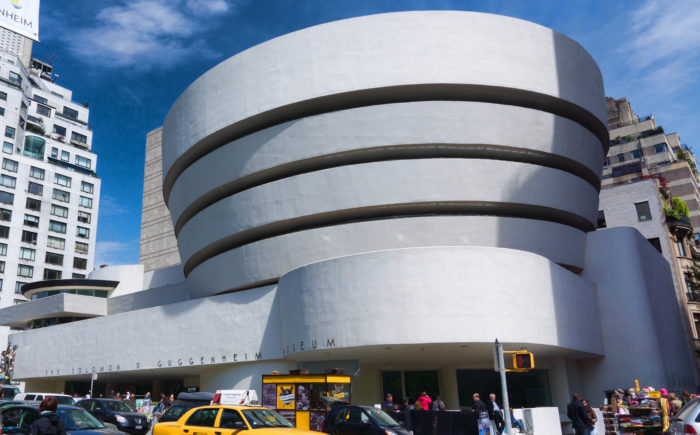
The Guggenheim. Image: Jean-Christophe BENOIST/Wikimedia
The Solomon R. Guggenheim Museum would be a standout structure just about anywhere, but placed amid the formal mansions of Fifth Avenue, it is especially showstopping. The last major work by Frank Lloyd Wright, the building is most notable for its spiral form and smooth white exterior. Inside a spiral ramp unfurls from the skylight like a ribbon. While the curved walls and lack of individual rooms make the Guggenheim an anomaly among most other major museums (Wright declared that the design would make the neighboring Metropolitan Museum of Art “look like a Protestant barn”), that is the point. The Guggenheim is a modern building for displaying modern art.
Neue Galerie New York
1048 Fifth Avenue (at 86th Street)
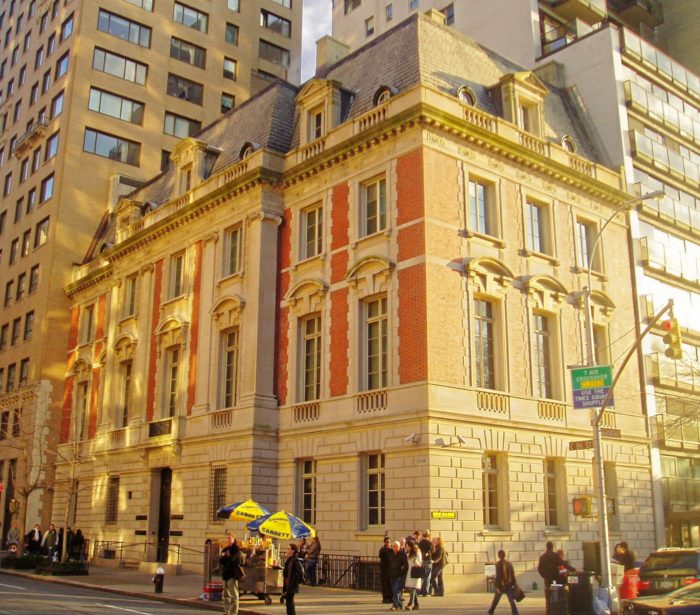
The Neue Galerie: Image: Razr/Wikimedia
The architecture firm Carrère and Hastings was responsible for some of the city’s grandest Beaux-Arts buildings, including the main branch of the New York Public Library, the Lunt-Fontanne Theatre, the Henry Clay Frick House (now home to the Frick Collection), and the William Starr Miller House, now known as the Neue Galerie. Completed in 1914, the six-story, 28-room mansion was designed for industrialist Miller in lavish Louis XIII style. After the last of the Miller family died in 1944, Grace Vanderbilt, the widow of Cornelius Vanderbilt III, lived here. Having spent the previous several decades in an 85-room mansion cattycorner to St. Patrick’s Cathedral, Mrs. Vanderbilt called her new home “the gardener’s cottage.” Since 2001 this “cottage,” as the Neue Galerie, has been dedicated to German and Austrian art and design from the early 20th century, featuring works by Gustav Klimt, Otto Dix, Paul Klee, and Mies van der Rohe, among others.
Metropolitan Museum of Art
1000 Fifth Avenue (between 80th and 84th Streets)
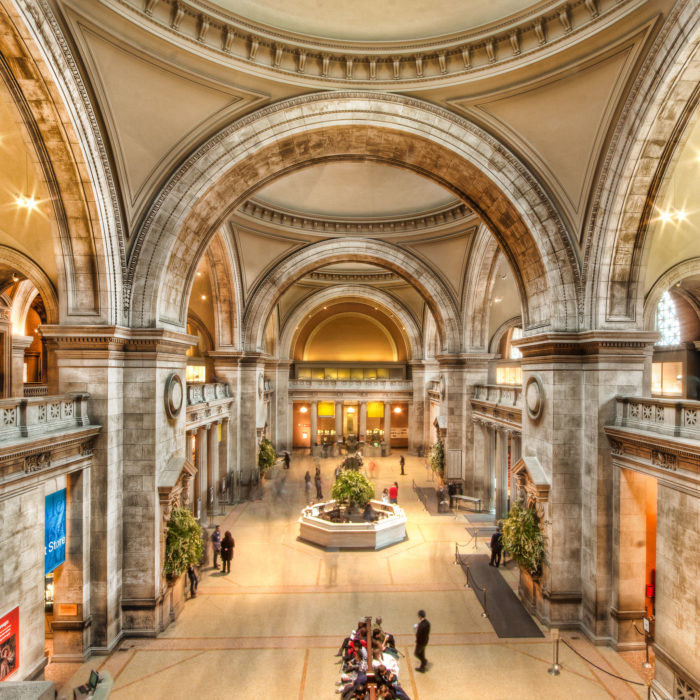
The main lobby of the Met. Image: Sracer357/Wikimedia
There is nothing small-scale about the Met. The third most visited art museum in the world, and the fifth most visited museum overall, it is four city blocks long, with more than 2 million square feet of floor space to hold its permanent collection of art, artifacts, costumes, armor, weaponry, jewelry, and musical instruments spanning more than 5,000 years. So it is hardly surprising that no signle architect can be credited with designing the building. The original, much smaller structure on the site was designed by Central Park co-designer Calvert Vaux and Jacob Wrey in High Victorian Gothic style. Subsequent additions included the famed Fifth Avenue facade, the main lobby (aka the Great Hall), and the main stairway, which were designed by Gilded Age favorite Richard Morris Hunt but not completed until 1902, seven years after his death. The wings flanking the Hunt facade were the work of equally acclaimed architects McKim, Mead & White. Among the more recent additions, the Sackler Wing, which houses the Temple of Dendur and a reflecting pool, was designed by Kevin Roche and associates and completed in 1978.









